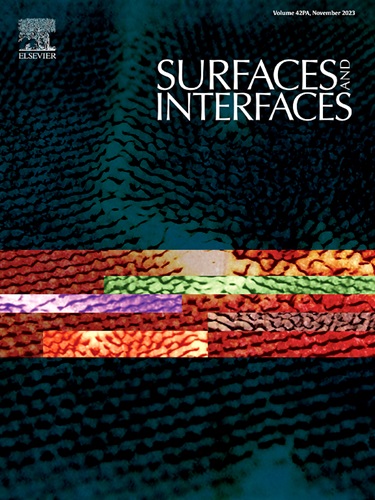Atomic layer deposition of hafnium dioxide for increasing temporal stability of silver-capped silicon nanopillar substrates used for SERS
IF 5.7
2区 材料科学
Q2 CHEMISTRY, PHYSICAL
引用次数: 0
Abstract
Surface-enhanced Raman spectroscopy (SERS) is a label-free optical method employed due to its sensitivity and specificity. Metal nanoparticles are commonly used as SERS substrates for detection of molecules and any change in the metal affect the SERS performance. Silver (Ag) is a renowned plasmonic material, but it presents relatively poor chemical stability. The application of thin surface coatings has been recognized as an effective approach to enhance the chemical stability of Ag nanostructures, while preserving their desirable sensitivity.
Therefore, in this study 0–13 nm thick hafnium dioxide (HfO2) coatings, deposited by atomic layer deposition (ALD), have been investigated to improve the temporal stability of Ag-capped silicon nanopillar (NP) SERS substrates. Comprehensive characterization was performed, and the SERS performance were evaluated with two reporter molecules on uncoated Ag-capped NP substrates. They displayed significant variation over time, while substrates with ∼1.5 nm HfO2 exhibited superior signal stability and noise reduction. Over a 5-month period, substrate stability was tested for detection of the nitroaromatic explosive 2,4-dinitrophenol. The limit of detection (LoD) and limit of quantification (LoQ) of uncoated Ag-capped NPs varied significantly, whereas HfO2-coated substrates maintained a stable SERS performance with limited variation in the LoD and LoQ, thereby ensuring consistent results.

求助全文
约1分钟内获得全文
求助全文
来源期刊

Surfaces and Interfaces
Chemistry-General Chemistry
CiteScore
8.50
自引率
6.50%
发文量
753
审稿时长
35 days
期刊介绍:
The aim of the journal is to provide a respectful outlet for ''sound science'' papers in all research areas on surfaces and interfaces. We define sound science papers as papers that describe new and well-executed research, but that do not necessarily provide brand new insights or are merely a description of research results.
Surfaces and Interfaces publishes research papers in all fields of surface science which may not always find the right home on first submission to our Elsevier sister journals (Applied Surface, Surface and Coatings Technology, Thin Solid Films)
 求助内容:
求助内容: 应助结果提醒方式:
应助结果提醒方式:


